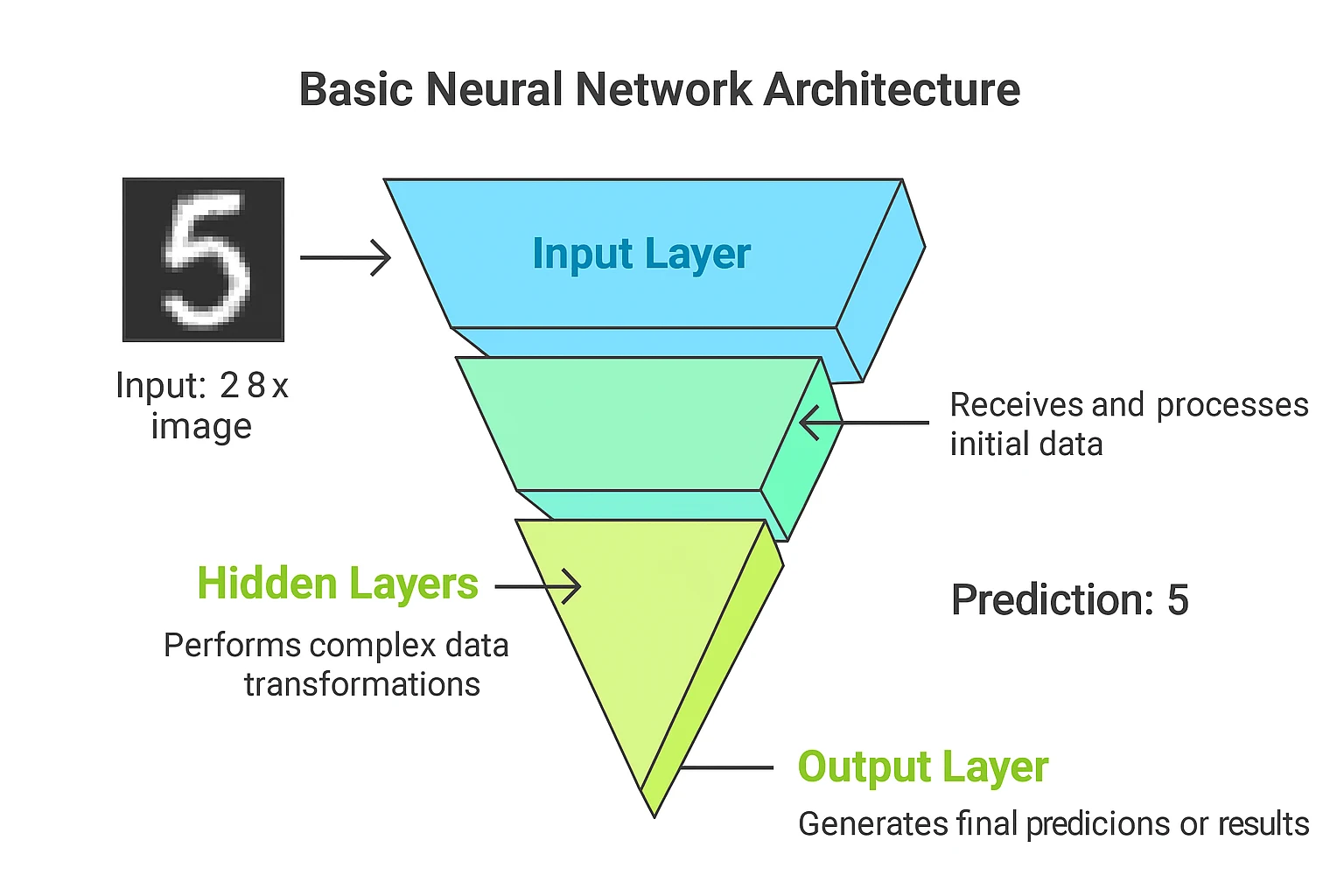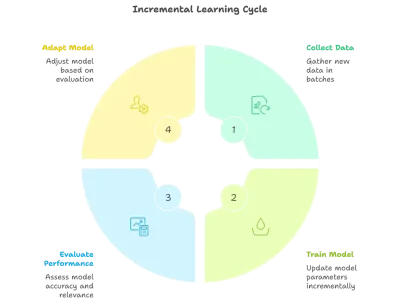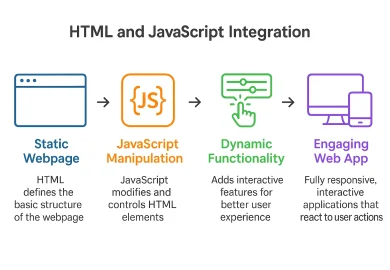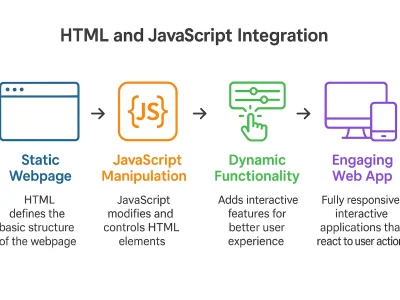Introduction
In the Artificial Intelligence and Machine Learning world, everything revolves around Neural Networks. This advanced technology learns from data and helps to make smart & intelligent decisions. Be it identifying patterns among faces in photos or predicting diseases, or making self-driving cars, neural networks are the core foundation in this modern technology.
With no industry left untouched, AI has also affected the automotive industry. The dream of self-driving cars has come into the picture with the development of artificial intelligence, it works on deep learning models that can interpret the environment around them. They detect obstacles, traffic signals, crowds in the streets, stopping points, and initial points and make real-time data decisions by processing data from cameras, radar & GPS sensors. These are not just theoretical concepts in the books that can be studied in the classroom but also have real-world applications. It has the intelligent to grasp, adapt, and make the foundation of intelligent systems across industries.
What are Neural Networks?
They are also called Artificial Neural Networks (ANNs). These are basically computing systems inspired by a biological network of neurons in the human body. The way our brain processes signals and learns from experiences, the same way artificial neural networks learn and process data and form patterns.
Each neural network consists of layers made of nodes or neurons. These nodes are connected to each other to perform a specific task, which enables the network to understand and interpret input data.
As Michael Nielsen wrote in the book Neural Networks and Deep Learning (2015), “A neural network is a network of simple units called neurons, which receive input, process it, and pass on the output to the next layer”.
If you want to dive deeper into neural networks, check out our Machine Learning course on Tutedude.
Major components in Neural Network
A basic Neural Network contains three layers:
1. Input layer: Raw data enters the network. Each neuron in this layer demonstrates input data, such as pixel values in an image.
2. Hidden layer: These are the layers between input and output where real computation takes place. Data is transformed via the use of weights and activating functions. More hidden layers mean deeper networks, which is often referred to as Deep Learning.
3. Output Layer: It finally gives results may be in the form of classification, prediction or numerical value.
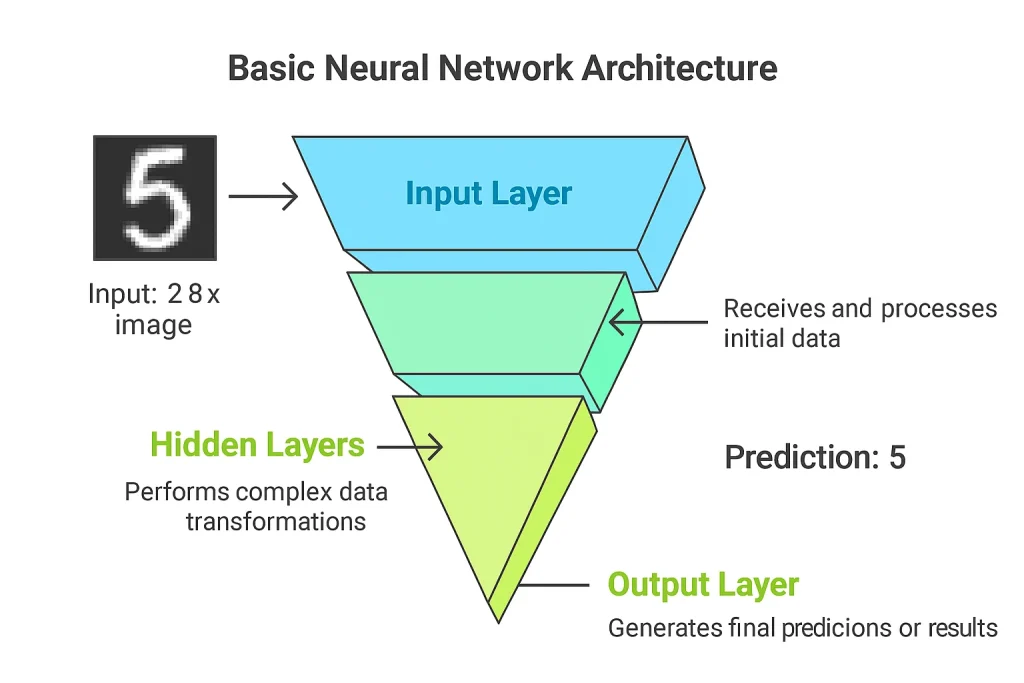
Working of Neural Network
They operate through the process of learning from data. It is done in several steps:
- Forward Propagation: Input data goes through a network layer by layer. Each neuron processes input using mathematical operations—weighted sums followed by an activation function.
- Training the Network: The network compares its prediction to the actual outcome and calculates an error. These errors are used to adjust the network’s weights.
- Backpropagation Gradient Descent: It is an optimization technique. Backpropagation is the process of sending errors backward through the network. With the gradient descent model, adjust weights to reduce mistakes over time. Repeated iterations allow neural networks to learn and improve performance.
Activating Functions: Giving Life to Neurons
Activation of functions tells us whether we should ‘Fire’ neurons or not. It helps neural networks in learning complex patterns. The most commonly used activation functions are:
- Relu (Rectified Linear Unit): It returns zero for negative inputs & input itself for positive ones.
- Sigmoid: Oftenly used in binary classification, gives output between 0 and 1.
- Tanh: Similar to the Sigmoid function that gives output between -1 and 1.
- Softmax: Used in multiclass classification to generate probabilities for each class.
Every function has a different application depending on the problems that need to be solved.
Types of Neural Networks
Neural Networks have different types of architecture and can perform different tasks depending on the requirement. Basic types of Neural Networks:
- Feedforward Neural Networks (FNNs) are simplest and easiest networks in which data flows in one direction from input to output. They can perform basic classification tasks. For example – spam detection.
- Convolutional Neural Network (CNN): It is ideally used for variety of image and video processing. CNNs use filters to scan different kinds of images and detect patterns like textures and shapes. They are also widely used in facial recognition, object detection & medical imaging.
- Recurrent Neural Networks (RNN) are designed for sequential data such as time series and text. They have significant ability to retain information from previous inputs, making them suitable for language translation and speech recognition.
- Generative Adversarial Networks (GANs): These networks consist of two components, a generator and a discriminator, and they are used for generating real-time images and synthetic data.
Real-World Applications of Neural Networks
Neural networks have many real-time applications. Affecting every sector, be it industrial or healthcare. Some of Real life examples are discussed further:
- Health Sector: AI is not only limited to computers or the I.T. world but has an impact in every sector, enabling faster and more accurate diagnosis in healthcare. Deep Learning models can analyze X-rays and MRIs to identify conditions like pneumonia; many times, they can even surpass human diagnosis. Neural networks have revolutionized diagnostic systems, analyzing medical images with precision.
- Finance: AI can help bring efficiency, security, and accuracy to the financial world by deeply analyzing transactions and eliminating the probability of human errors. Neural networks can detect unusual behavior, evaluate financial risks by analyzing credit transaction history, and algorithmic trading has become a new revolution in the finance industry, thanks to the advancement of AI.
- Retail industry: Retailers can use product recommendations to analyze user preferences and browsing behavior to suggest relevant products. Neural networks also help algorithms forecast demand and optimize stock levels to reduce costs.
- Autonomous Vehicles: AI is at the core of self-driving car technology. It helps in object detection by identifying pedestrians and signals in real-time, predicting how nearby objects will move, and advanced algorithms can guide safe and efficient responses to traffic scenarios. For example, Tesla’s self-driving cars use neural networks like Convolution Neural Networks (CNN) and RNN, trained on a vast dataset of real-world driving conditions.
Challenges and Limitations of
Despite so much advancement, Neural networks have some limitations:
- Overfitting and Underfitting: Sometimes Neural Networks perform well on training data and not so good on new actual data; this is what we call overfitting. Underfitting happens when the model is too simple to capture patterns. To solve this problem, we can use regularisation techniques, data augmentation to improve generalisation.
- High Computational Costs: To train deep networks, we require high-powered GPUs, which can be costly and time-consuming. A solution to this is cloud platforms like GCP, AWS, and Azure.
- Large Data Requirements: Neural Networks often need massive datasets to learn; small datasets give poor results. To overcome data limitations, we can use data augmentation, pre-trained models, or transfer learning.
- Black Box Nature: Sometimes, it is very difficult to predict how neural networks make a decision, especially in areas like finance or healthcare.
Tools and Requirements
Some beginner-friendly tools to start with Neural Networks are-
- TensorFlow is an open-source machine learning framework known for its scalability, making it suitable for research and large-scale production. Supports deep learning, neural networks, and other ML models.
- Pytorch: It was created by Facebook’s AI Research lab and is a popular deep learning framework for model development and debugging.
- Keras: It is a high-level neural network API written in Python. It runs on top of TensorFlow, designed to enable fast experimentation with deep neural networks. Its simplicity makes it excellent for beginners due to its easy-to-use User interface.
Understanding Python is essential for building neural networks. Our Python course will help you get started.
Steps to Build Simple Neural Networks
- Start by installing Python, the programming language used to build Neural Networks. Then, install Jupyter Notebook to run code.
- Choosing Dataset to train model. The commonly used dataset for beginners, MNIST, contains 70,000 grayscale images of handwritten digits (0-9). Used for image classification using neural networks.
- Using Keras for building Network layers to prevent overfitting.
- Once a model is defined, use the model.fit() function for training, which means the model will go through data multiple times to learn patterns and improve weights.
- Evaluating accuracy with test data also shows whether it generalises well beyond training examples.
Conclusion
Neural Networks are the foundation of modern AI. From simple use cases to advance technologies, Neural networks are shaping the world in every aspect. They help interact with machines in the real world in efficient and different ways. Neural networks help work efficiently and open up vast career opportunities, time efficiency, fewer resources, and more output. Whether you’re a student, a developer, or just curious about AI, now is the best time to learn about neural networks. Their potential is limitless—and so is yours.

